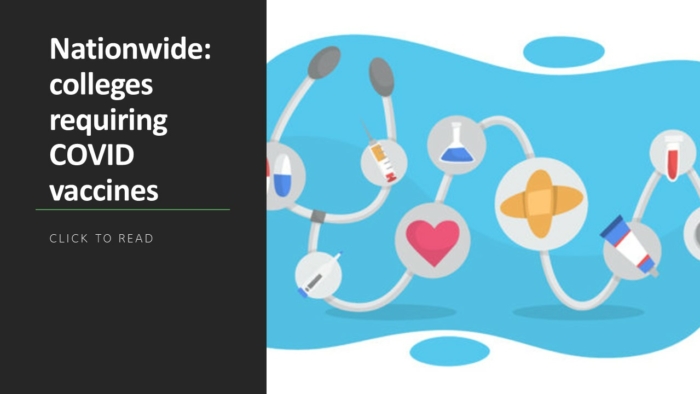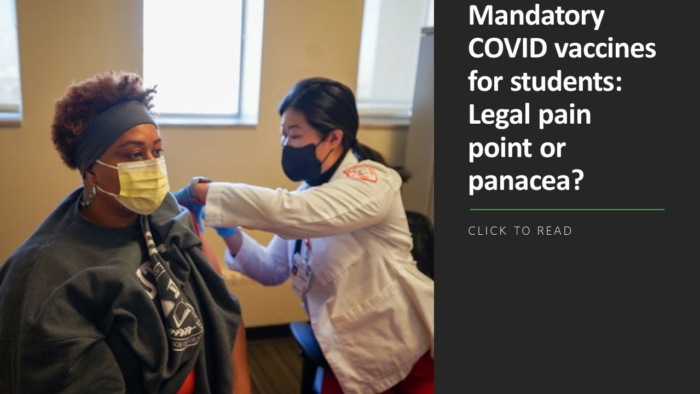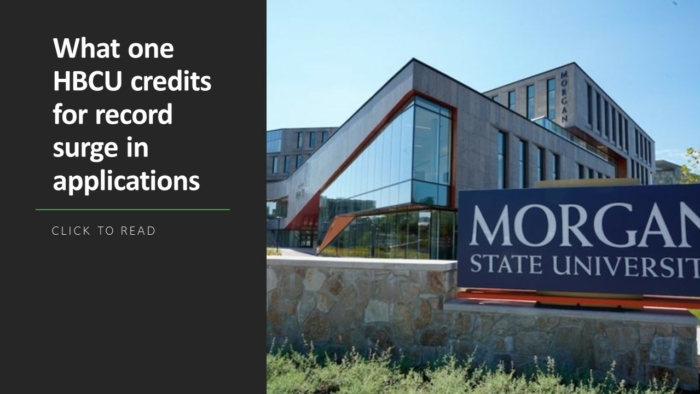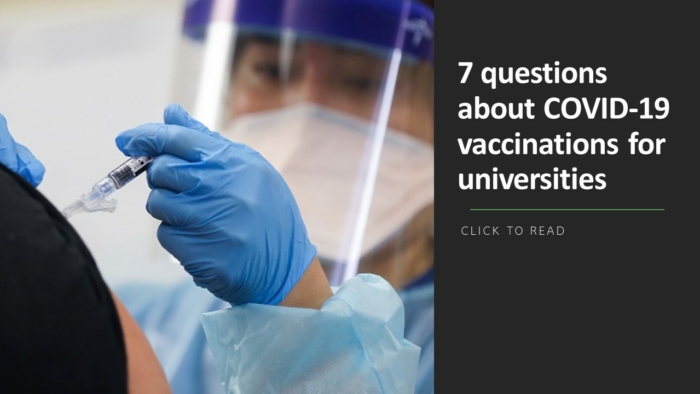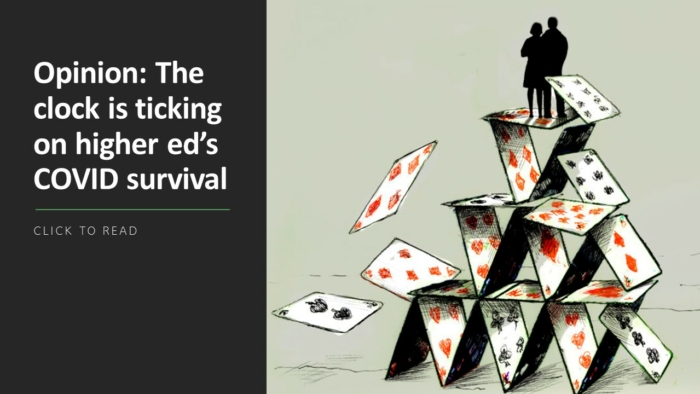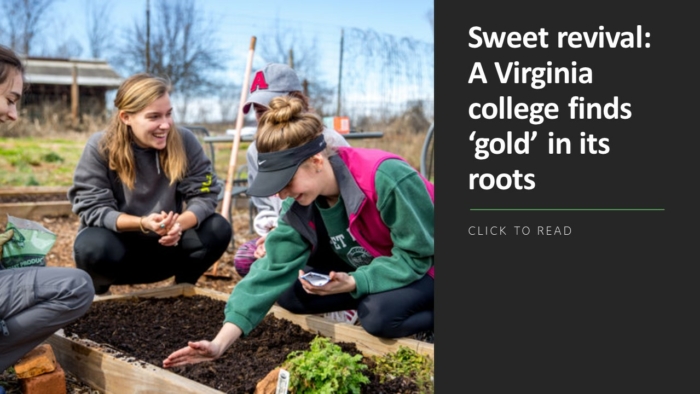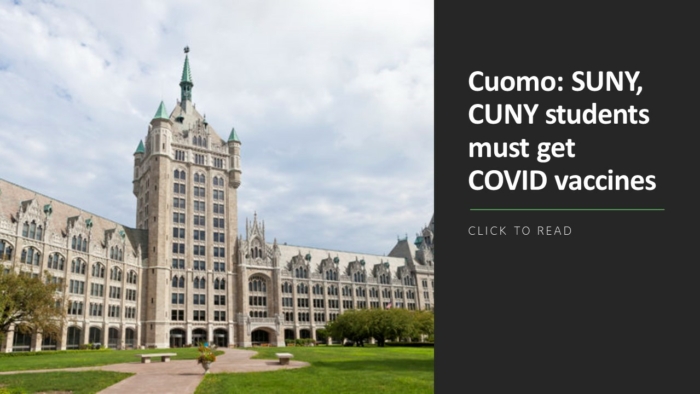As Kevin Kruger, the president of NASPA-Student Affairs Administrators in Higher Education, points out, the higher education landscape isn’t all gloom and doom to those at the top of the summit. In fact, despite inflation, contraction, enrollment losses and lingering COVID variants, they see gold.
“College presidents are pretty optimistic about the next five years and actually pretty optimistic about the next 10 years,” Kruger said during the recent National Association of Student Financial Aid Administrators annual conference. “81% of college presidents think that their institution will be financially stable in the next five years, and slightly less 77% think it will be financially stable over the next 10 years.”
Endowments are up. State funding is up. No wonder that rosy glow still exists for some institutions. But how long can that last in this economic environment? Remember those CARES gifts from the government? They’ll shortly dry up.
College presidents might be savvy at glossing over harsh realities with smoke and mirrors, but can they really mask recruitment challenges, mental health, affordability, cultural divides and labor shortages? Time will tell. Tuition discounting is poised to force more mergers and closures. Community colleges are laying off workers. Higher ed has lost a million students during the pandemic and many haven’t made it back. Is there a positive way to spin all of that?
“Students have more economic opportunities,” Kruger said. “This is a great labor market for students. It’s a great time to be a college graduate, which I think underscores the value of a college education even more. It allows us to really push that as a key outcome for getting a college education. The population with the lowest unemployment rate in any recession is always college graduates. This value of a college education has been buoyed, and even more so now in this labor market.”
At the conference, Kruger offered guidance on five key challenges facing student affairs leaders and other administrators:
Mental health: Kruger pointed out that two of the top three issues facing colleges that were cited by presidents were mental health—No. 1 was related to students and No. 3 to faculty and staff, with enrollment pulling in at No. 2. “It is indicative of how much attention is being paid,” he said. “We continue to see issues around anxiety. Eating disorders are up. Family distress is up. Academic distress is up.” Kruger said support must go not only to undergrads, especially those populations that are most vulnerable, but also graduate students, where suicide is the No. 1 cause of death.
Cultural divide: Kruger said, “We’re in the midst of something I’ve never seen in my 40 years of education, and that is the intrusion of state legislators, state institutional boards and governors into what happens at a college or university. This is changing the nature of how we function. We’re seeing this happening across many states, particularly red states. Legislation is prohibiting institutions from doing things that are divisive in nature. Within the academy, how do we instill in students the belief that their First Amendment rights are secure and those opportunities are the same for both progressive and conservative students? Higher education has a label on it, that we serve the elites and we serve the progressives only, and that we restrict conservative speech. I don’t necessarily think that that’s true. But I don’t think we’ve told our story well enough to help our students understand the opportunities for a wide range of divergent thoughts on our campuses.”
Labor shortages: Workers want flexibility, good pay, better roles and more transparency from leaders. They want upskilling and more development opportunities. They aren’t getting enough of them. “Several things that employees really want from their work: They want to be valued by their organization. They want to be valued by their manager. They want a sense of belonging,” Kruger said. “81% of people will leave because they’re underappreciated or undervalued by their institution. This is clearly something that we can do something about. They want opportunities for advancement, good teammates and a flexible work schedule. How do you raise motivation for staying at your company? Pay. Millennials and GenX are looking for pay over a sense of purpose.”
Affordability: Kruger said too many underserved students are being left behind. “We should be evaluating how well institutions graduate and help ensure persistence for low-income students, first-generation students, Black students, Hispanic students, indigenous students. That should be the measure.” He offered five areas that can be improved:
- Getting students into pre-enrollment programs at a much higher rate
- Helping students understand the ways in which they think about financing.
- Disaggregating data to understand who is succeeding and who’s not succeeding and addressing off-campus issues such as housing and childcare
- Looking at policies for students who can’t graduate because of library or parking fines
- Engaging with families in more sophisticated ways.
- Retaining online options to provide flexibility
- And provide robust coaching and mentoring options
Recruitment: The same imbalance that exists around affordability also shows up in which students are attending and attaining degrees. Kruger notes a Georgetown University Center for Education and the Workforce study that shows “around 80% of white middle-class students end up in one of our 235 most selective institutions, [while 73% of] Black, Latin X and Indigenous students, go to more open-access, less-selective institutions.” Though enrollments are showing some bounce back from 2020, those are groups leaders should be watching. “There’s no doubt that a college degree is the lever to address social mobility,” Kruger said. One of those ways he said is to further promote first-generation successes on campuses.

